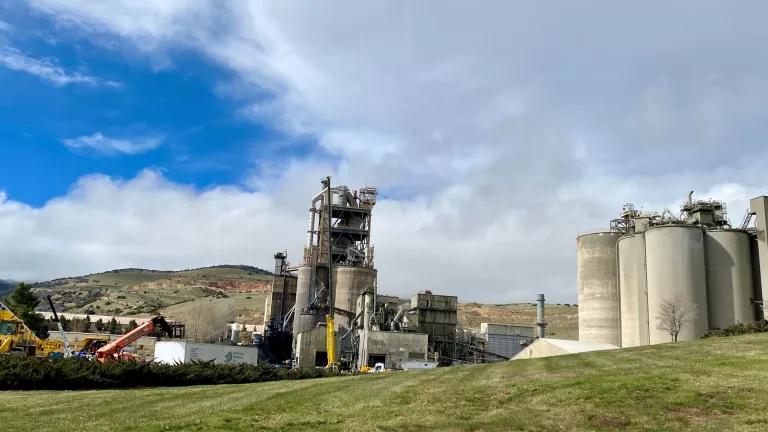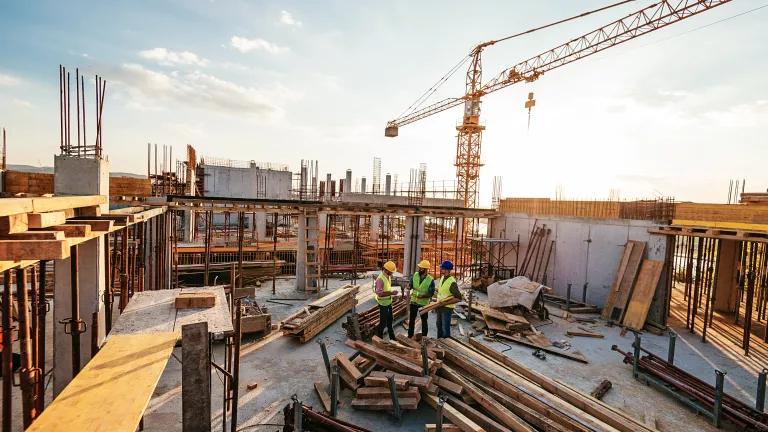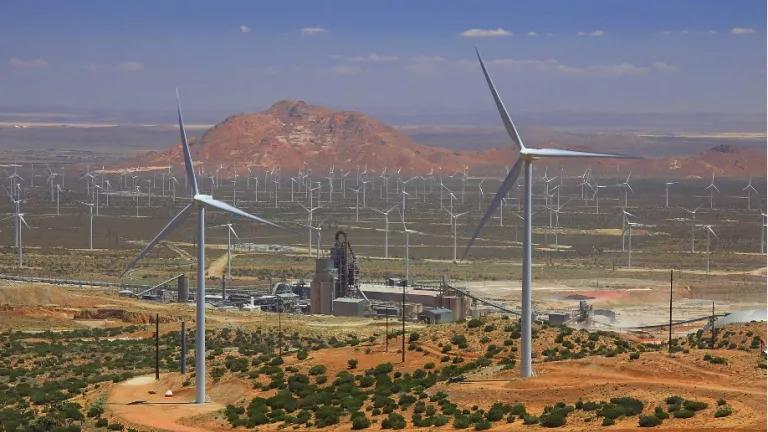California Enacts Legislation to Slash Cement Emissions
Governor Gavin Newsom just signed groundbreaking bipartisan legislation to zero-out carbon pollution from cement used in the world's fifth-largest economy.

A cement works at Tehachapi Pass, California
Governor Gavin Newsom signed groundbreaking legislation today to zero-out carbon pollution from cement used in the world's fifth-largest economy. Senate Bill 596 by Senator Josh Becker, which earned bipartisan support, directs the California Air Resources Board to develop and implement a comprehensive strategy to achieve net-zero greenhouse gas emissions associated with cement used within California as soon as possible, but no later than 2045, and to establish interim targets for reducing cement’s greenhouse gas intensity. The bill builds on a pledge by California’s cement industry to be carbon neutral by midcentury and will identify key barriers and solutions to turn that commitment into action.
NRDC sponsored SB 596 in partnership with a broad coalition and participated in a constructive dialogue with the author's office and the California Nevada Cement Association that ultimately led to CNCA's support for the bill.
Cement’s Giant Carbon Footprint
Cement is a dry powder mixed with aggregate, sand, and water to produce concrete. Cement plants manufacture clinker—produced by heating limestone and clay in a rotating kiln at very high temperatures—as the “glue” that binds a concrete mix together.
And concrete is everywhere. It is the most widely used material on earth (last year 30 billion tons of concrete were produced globally) and demand is growing due to urbanization. Traditional cement production is also highly polluting. While cement constitutes 10-15% of concrete’s mass in a typical mix, it accounts for 80-90% of its GHG emissions and is a major source of local air pollution. Together, the ubiquity of concrete and the emissions-intensity of making cement means the cement industry would rank as the world’s fourth-largest emitter if it were a country, contributing nearly 8% of global carbon dioxide output. Here at home, cement manufacturing is California’s second-largest industrial source of carbon pollution after oil and gas production.
Clearly, these trends need to change—and fast—if we are going to achieve our climate targets both within and beyond California. Thankfully, momentum is growing to unlock solutions for this essential industry.
Getting to Net-Zero
Cement is often referred to as a “hard-to-abate” industry because a majority of the GHG emissions from the manufacturing process result from the chemical process of limestone calcination, not the combustion of fossil fuels for energy use. Near-term emissions reductions are possible through fuel switching to lower carbon energy sources (California’s cement plants are the state’s largest consumers of coal and petroleum coke), improving material use and production efficiencies, and enhancing the use of so-called supplementary cementitious materials (SCMs) in concrete. But producing carbon neutral or negative cement will accordingly require transformative carbon management technologies such as carbon capture and storage.
SB 596 responds to both the near- and long-term abatement opportunities for California’s cement industry by directing ARB to develop a glidepath out to 2045 with strong interim targets to demonstrate progress, including a 40 percent reduction in carbon intensity by 2035. Like the successful process used to develop ARB’s short-lived climate pollutant reduction plan, this will allow for a robust dialogue with industry and other stakeholders to spotlight key market and regulatory barriers; evaluate a range of solutions across new and existing measures; and identify actions that meet essential criteria, such as enhancing California’s competitiveness, improving local air quality, and leveraging state and federal incentives to support economic and workforce development.
Looking Across the Cement-Concrete Supply Chain
For these solutions to take hold, however, California must develop complementary policies to stimulate demand for the use of low carbon cement in concrete. Since public agencies are the largest purchasers of concrete in California (about 40% of all concrete in the state is used for roads and sidewalks), a great place to start is adding concrete to California’s Buy Clean program, which requires contractors to use low carbon building materials to compete for state contracts. Another is to hasten the shift away from prescriptive cement content specifications and toward performance-based specifications, which afford concrete producers the latitude to achieve significant cost and emissions reductions in their mix designs without sacrificing performance. NRDC is working with Senator Becker on a companion bill, SB 778, to take both of those steps and provide a market for the low carbon cement produced under SB 596.
Stay tuned!



